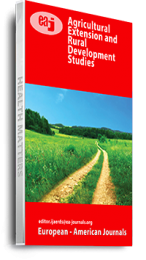Kakamega is one of the most populated Counties of Kenya. Due to continuous cultivation of the land and heavy rainfall received, it is prone to loss of soil nutrients through leaching. This has resulted to reduced crop productivity in the region. A number of strategies have been initiated by the government to promote soil fertility. Fertilizer subsidy program is one of the policy instruments so far implemented despite heavily criticized. The paper provides findings of a study carried out to analyze the effect of adoption of fertilizer subsidy program on maize productivity among the small scale farmers. Cross sectional data was collected from 300 respondents who were selected using multistage sampling procedure in Kakamega County. Questionnaires were used to collect primary data from randomly selected households. A probit and Tobit two stage models- controlling for programme selection bias were used to determine the probability of adoption and the effect of participation in the fertilizer subsidy program on maize productivity respectively. Maize productivity was significantly influenced by the subsidy program participation at 5% level. The average maize productivity was 2.21t/ha. Farmers who benefited from the program had an average productivity of 2.46t/ha significantly higher than non-participants who had an average of 1.97t/ha. Tobit model results showed that subsidy program participation had a likelihood of increasing productivity by 0.323t/ha. However, there is an existing yield gap between what is possible with the existing technologies and what farmers currently achieve. The cause of this is low average fertilizer usage to make an impact on productivity as compared to the national recommended application rates. Hence the study recommends expansion of the subsidy program by increasing quantities of fertilizer supplied to incorporate more farmers in the program.
Keywords: Dummy Variable, maize productivity, probit model, subsidy program

